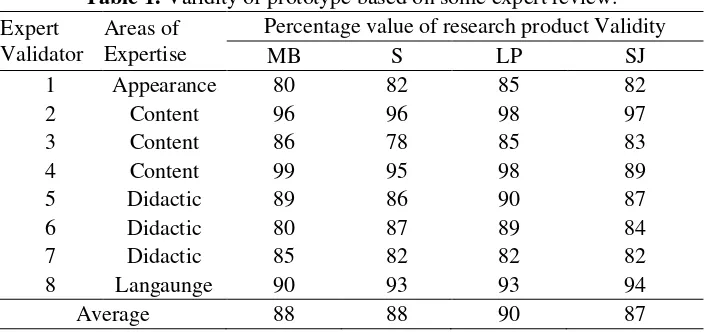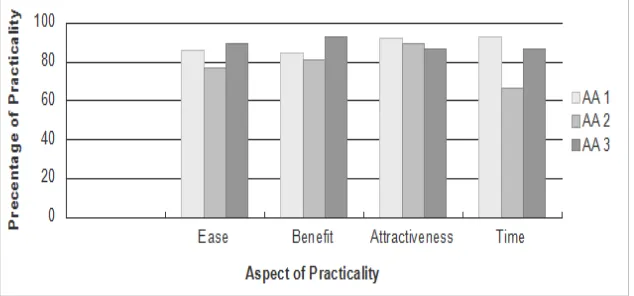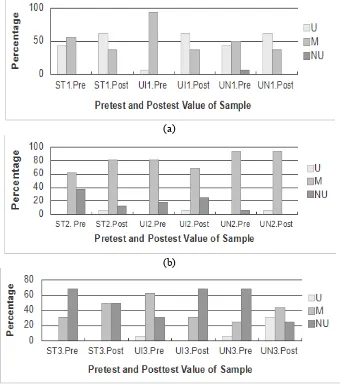IOP Conference Series: Materials Science and Engineering
PAPER • OPEN ACCESS
Impact of Learning Model Based on Cognitive
Conflict toward Student’s Conceptual
Understanding
To cite this article: F Mufit et al 2018 IOP Conf. Ser.: Mater. Sci. Eng.335 012072
View the article online for updates and enhancements.
Related content
Influence of Learning Strategy of Cognitive Conflict on Student Misconception in Computational Physics Course A Akmam, R Anshari, H Amir et al.
-Does Conceptual Understanding of Limit Partially Lead Students to
Misconceptions? B Mulyono and Hapizah
-Text Based Analogy in Overcoming Student Misconception on Simple Electricity Circuit Material R Hesti, J Maknun and S Feranie
1234567890‘’“”
ICOMSET IOP Publishing
IOP Conf. Series: Materials Science and Engineering 335 (2018) 012072 doi:10.1088/1757-899X/335/1/012072
Impact of Learning Model Based on Cognitive Conflict
toward Student’s Conceptual Understanding
F Mufit1*, F Festiyed1, A Fauzan2 and L Lufri3.
1
Physics Department, Faculty of Mathematics and Science, Universitas Negeri Padang, Indonesia.
2
Mathematics Department, Faculty of Mathematics and Science, Universitas Negeri Padang, Indonesia.
3
Biology Department, Faculty of Mathematics and Science, Universitas Negeri Padang, Indonesia.
Abstract. The problems that often occur in the learning of physics is a matter of misconception and low understanding of the concept. Misconceptions do not only happen to students, but also happen to college students and teachers. The existing learning model has not had much impact on improving conceptual understanding and remedial efforts of student misconception. This study aims to see the impact of cognitive-based learning model in improving conceptual understanding and remediating student misconceptions. The research method used is Design / Develop Research. The product developed is a cognitive conflict-based learning model along with its components. This article reports on product design results, validity tests, and practicality test. The study resulted in the design of cognitive conflict-based learning model with 4 learning syntaxes, namely (1) preconception activation, (2) presentation of cognitive conflict, (3) discovery of concepts & equations, (4) Reflection. The results of validity tests by some experts on aspects of content, didactic, appearance or language, indicate very valid criteria. Product trial results also show a very practical product to use. Based on pretest and posttest results, cognitive conflict-based learning models have a good impact on improving conceptual understanding and remediating misconceptions, especially in high-ability students.
1. Introduction
Problems of misconception and low understanding of concepts is a problem that many occur in the learning of physics. Various studies show that misconceptions occur on almost all physics topics. Wandersee, Mintzes, and Novak, 1994 [1] suggest that misconceptions occur in all areas of physics, as many as 700 studies of the conceptual, there are 300 examining the fields of mechanics, 159 on electricity, 70 about heat, optics, and properties material, 35 about earth and space and 10 researches on modern physics. Physical misconceptions also occur in every level of education of learners, even in teachers, such as elementary teachers [2,3] and high school teachers [4,5]. Various studies also reveal misconceptions that occur in prospective students [6-11]. Misconceptions that occur in prospective teachers, potentially spreading misconceptions to students later.
2
1234567890‘’“”
ICOMSET IOP Publishing
IOP Conf. Series: Materials Science and Engineering 335 (2018) 012072 doi:10.1088/1757-899X/335/1/012072
methods and models that do not involve learners in learning, such as lecture methods, tend to cause misconceptions. To address misconceptions, need interesting methods and learning strategies by associating topics with events. In addition, before starting a new topic, educators need to provide some sort of test to identify misconceptions on students. Some of the strategies that have been done to overcome misconceptions are teaching based on action research, teaching based on computer, and teaching based on real experiment video analysis [12]. Components of a fully integrated strategy or method will form a learning model. The development of learning model needs to be done to achieve the learning objectives, especially those that can overcome student misconception. This study aims to develop a cognitive conflict-based learning model and explore its impact on conceptual understanding and remediation of student misconceptions.
The learning model has five basic components [13], namely (1) syntax, is the sequence or operational steps of learning, (2) social system, describes the roles of educators and learners, hierarchical relationships and role-based rules (3) principles of reaction, is a picture of how teachers should see, treat, and respond to learners, (4) support system, ie all means, materials, tools, or learning environments that support learning, and (5) instructional & nurturant effects, is a learning outcome obtained directly based on the intended objectives and out-of-target learning outcomes. In this research, cognitive-based learning model is designed.
According to Lee, et al. (1) preliminary is done by presenting a cognitive conflict, (2) conflict is creation with the help of demonstration activities involving assimilation and accommodation process, and (3) resolution is discussion and concluding the discussion. While, Baser [2] states the implications of cognitive conflict learning are carried out as follows: (1) activation of alternative conceptions of students, (2) presentation of situations that cannot be explained by existing concepts, (3) creation of cognitive conflict with anomalous situations, (4) needs of the concep(5) students construct their own knowledge actively, (6) students interact with each other to share their ideas about the anomalous situation to find a solution, and (7) to know conception is helpful to solve the problem the same that may be faced in the future.
2. Methods
This type of research is Development Research or also called Design Research, is one of the research models to develop and validate the products developed to be feasible to use. Development / Design Research by Plomp [14] is: to design and develop interventions such as teaching and learning strategies, learning materials, products and systems as a solution to complex educational problems. This design / development research uses the development of the Plomp [14] model which consists of 3 stages. The first stage of preliminary research: to analyze needs and contexts, review the literature, develop a conceptual framework or theory for research. The second phase of development or prototyping phase: is an iterative design stage consisting of iterations, each becoming a micro-cycle research with formative evaluation as the most important research activity aimed at improving and refining the intervention. The third phase of the assessment phase, ie (Semi) summative evaluation to conclude whether the solution or intervention meets the specified specifications. This stage often leads to recommendations for improvement of interventions, also called summative semifinals.
This article reports on the second stage of development or prototyping phase, which includes the prototype design process, validity test and the practical test of one to one evaluation. The process of developing / designing educational research is conducted through a systematic cycle process, from analysis, design, evaluation activities and revisions done iteratively in order to achieve the right balance between the desire and the realization achieved.
1234567890‘’“”
ICOMSET IOP Publishing
IOP Conf. Series: Materials Science and Engineering 335 (2018) 012072 doi:10.1088/1757-899X/335/1/012072
product trial was conducted through one-to-one evaluation of 9 sample students with low, medium and high ability from 3 different universities.
3.Result and Discussion
3.1. Prototype Design
The prototype was designed based on preliminary research results, that the students still experienced misconceptions and low-concept understanding despite having taken the basic physics course [12]. Students are still separating between understanding concepts and physics equations. The existing learning model has not fully addressed the problem of conceptual understanding, especially misconception. For that purpose, it is designed a learning model that can overcome the problem of concept comprehension and student misconception. The learning model is designed to reveal the initial knowledge of the student before the learning begins, especially identifying common misconceptions. The model also comes with presentation of phenomena or events that can generate conflict and dissatisfaction in students' thinking, especially phenomena that counter their misconceptions.
Based on various analysis in preliminary research stage, such as requirement analysis, context, student and study of various literatures then designed prototype of cognitive conflict based learning model with 4 syntax as follows: 1. preconception activation, 2. presentation of cognitive conflict, 3. Discovery concepts and equations , and 4. Reflection. The prototypes of model support systems in the form of S, LP, SJ are also designed and constructed based on the syntax of cognitive conflict-based learning model.
3.2. Test the validity of Prototype
Aspects of the validity assessment of the model prototype include the suitability of learning theories that support the model and the suitability and clarity of the model components, including syntax, social systems, reaction principles, support systems, instructional and nurturant effects. Assessment also includes the language and appearance aspects of the model book (MB).
The prototypes of model support systems (S, LP, SJ) are based on the syntax of the cognitive conflict learning model. Aspects of the syllabus's validity assessment include component conformity, syntax and language compatibility. Assessment of LP validity includes both syntax and language. Aspects of the assessment of the validity of the SJ include the suitability of components as well as the compatibility of syntax, content / content, appearance and language appropriateness.
Several revisions were made to the prototype according to the expert's suggestion in the areas of language, content, didactic and appearance to obtain valid product / prototype. Among the revisions were the use of punctuation and capital letters (cover), cover and lay out (appearance), allocation of learning time of each syntax (didactic), and revision of equations and images of physical phenomena (content). The validation of 8 experts on prototype can be seen in Table 1.
4
1234567890‘’“”
ICOMSET IOP Publishing
IOP Conf. Series: Materials Science and Engineering 335 (2018) 012072 doi:10.1088/1757-899X/335/1/012072
The validity value of the prototype cognitive conflict-based learning model and the support systems of the models (S, LP, and SJ) ranged from 88 to 90. The value is in a very valid category [15].
3.3. Practicality Test Prototype
The practicality of the product / prototype JS is limited to one-to-one evaluation of 9 students, 3 students with low, medium and high ability from 3 different universities. Practicality assessment includes aspects of ease of understanding JS, benefits and appeal of JS as well as JS working time allocation. The average value of practicality is based on these four aspects by 9 student samples, ranging from 82. - 90, which is at very practical criteria. Through interviews, in general all of the samples stated that they understood JS easily in terms of language, either the workmanship or the content of JS. Based on the level of academic ability and type of college, the practicality of JS prototype can be seen in Figures 1. Figure 1. shows that sample with low-academic ability (AA3) are more comfortable with understanding SJ and feeling the benefits. However, SJ is more interesting and the time allocation of SJ work is more effectively felt by sample with high-academic ability (AA1). Students with medium ability to feel the working time of JS less effective.
Figure 1. Practicality of SJ based on Sample Academic Ability Level
3.4.Pretest and Posttest Results
1234567890‘’“”
ICOMSET IOP Publishing
IOP Conf. Series: Materials Science and Engineering 335 (2018) 012072 doi:10.1088/1757-899X/335/1/012072
(a)
(b)
(c)
Figure 2. Level of Understanding Concept of Students based on academic ability level: (a) high, (b) medium and (c) low.
6
1234567890‘’“”
ICOMSET IOP Publishing
IOP Conf. Series: Materials Science and Engineering 335 (2018) 012072 doi:10.1088/1757-899X/335/1/012072
including a strategy for revising misconceptions.
In addition, cognitive conflict or conceptual conflict strategies are consistent with the philosophy of constructivism theory, which allows learners to construct new concepts or knowledge. Educators do not monopolize learning by rushing to teach the content without paying attention to learners about their initial knowledge. Learners are given the opportunity to realize conceptual mistakes (misconceptions) that may occur in constructing new concepts, and presents cognitive conflicts for learners in getting a new concept right. Cognitive conflict strategies train learners to think deeply, discover and realize mistakes, discover and test ideas, and construct new concepts or knowledge.
4.Conclusion
Cognitive conflict-based learning models have been designed and produced four syntaxes: (1) preconception activation, (2) presentation of cognitive conflict, (3) discovery of concepts and equations, (4) reflection; as an attempt to overcome the concept problem, especially the problem of misconception. The prototype of cognitive conflict-based learning model resides in very valid criteria through expert review process and very practical criteria through one-to-one evaluation limited test. In general, cognitive-based learning models have a good impact on improving conceptual understanding and remediating misconceptions, especially in students with high academic ability.
Acknowledgments
Acknowledgments to the Directorate General of Higher Education who has funded this research through Doctoral Dissertation Research Grant, funding year 2017. Acknowledgments were also to the Dean of the Faculty of Mathematics and Science of Universitas Negeri Padang, Chairman of STKIP PGRI West Sumatera and the Dean of Tarbiyah and Teacher Faculty UIN Imam Bonjol Padang which has allowed its college students to participate in this research.
References
[1]. Suparno, Paul (2013). Miskonsepsi dan Perubahan Konsep dalam Pendidikan Fisika. PT. Gramedia Widiasarana Indonesia : Jakarta.
[2]. Baser, M. 2006. Fostering conceptual change by cognitive conflict based instruction on student understanding of heat and temperature concepts. Eurasia Journal of Mathematics, Science and Technology Education. 2(2). 96-114. Retrieved from http://www.ejmste.com/ 022006/ d6.pdf
[3]. Pujayanto (2011). Miskonsepsi IPA (Fisika) pada Guru SD. Jurnal Materi dan Pembelajaran Fisika (JMPF) Vol 1 No 1 (2011) 22-24. Retrieved from http://jurnal.fkip.uns.ac.id/ index. php/fisika/article / view/1856
[4]. Wahyudi, I & N Maharta ( 2013) Pemahaman Konsep Dan Miskonsepsi Fisika Pada Guru Fisika SMA RSBI Di Bandar Lampung. Jurnal Pendidikan MIPA, Volume 14, Nomor 1, April 2013. Retrieved from http://download.portalgaruda.org/
[5]. Halomoan (2008). Analisis Konsepsi Guru Mata Pelajaran Fisika Madrasah Aliyah terhadap Konsep Gaya pada Benda Diam dan Bergerak. Retrieved from http://sumut.kemenag.go.id/ [6]. Kabaca T, Z Karadag, M Aktumen (2011). Misconception, cognitive conflict and conceptual
changes in geometry: a case study with pre-service teachers. Mevlana International Journal of Education (MIJE) Vol. 1(2), pp.44-55, 30 December, 2011. Retrieved from http://eujournal.org/index.php/esj/ article/download/3914/3705
[7]. Saputri D.F & C Sarwanto (2012) Penyebab Dan Remediasi Miskonsepsi Gaya Menggunakan Multimedia Dan Modul. Jurnal materi dan pembelajaran fisika vol 2, 2012. ISSN: 2089-6158. [8]. Taufiq, Muhammad (2012). Remediasi Miskonsepsi Mahasiswa Calon Guru Fisika Pada
1234567890‘’“”
ICOMSET IOP Publishing
IOP Conf. Series: Materials Science and Engineering 335 (2018) 012072 doi:10.1088/1757-899X/335/1/012072
[9]. Suastika, T Jhoni, T Utami (2015). Penelusuran Miskonsepsi Mahasiswa Tentang Matriks Menggunakan Certainty Of Response Index. Prosiding Seminar Nasional Fisika (E-Journal) SNF2015, Volume IV, Oktober 2015. Retrieved from http://snf-unj.ac.id/kumpulan- prosiding/snf2015/
[10]. Saputri, D. F & Nurussaniah. (2015) Penyebab Miskonsepsi Pada Optika Geometris. Prosiding Seminar Nasional Fisika (E-Journal) SNF2015, VOLUME IV, OKTOBER 2015. Retrieved from http://snf-unj.ac.id/kumpulan-prosiding/snf2015/
[11].
Mufit, Fatni. 2016. “A Study about Understanding the Concept of Force and Attitude towardsLearning Physics on First-Year Students in the Course of General Physics; as Preliminary
Investigation in Development Research”. Proceeding of SEA-DR (South East Asia- Design/Development Research) Conference 2016, International Conference: April, 17th-18th 2016. Universitas Negeri Padang, West Sumatera Indonesia. ISBN: 978-602-19877-5-9. (http://seminar.fmipa.unp.ac.id/seadr16/ brosur/Prosiding% 204th %20SEADR%202016.pdf) [12]. Mufit,
Fatni. 2016. “
The Stu
dy of Misconceptions on Motion’s Concept and Remediate
Using Real Experiment Video Analysis
”. Proceeding of ACER-N (Asean ComparativeEducation Research Network) Conference 2016, International Conference: November, 30th -Desember 01th 2016. Kopertis Wilayah X (West Sumatera, Riau, Jambi, Kepri Indonesia. ISBN: 978-983-2267-95-9.
[13]. Joyce, Bruce, M. Weill, E. Calhoun. 2011. Models of Teaching. Model-Model Pengajaran (edisi delapan). Penerjemah Achmad Fawaid dan Ateilla Mirza. Yogyakarta: Pustaka Pelajar.
[14]. Plomp T, N Nieveen (2013). Educational Design Research, Part.A: An Introduction. SLO. Netherlands Institute for Curricullum Development. Retrieved from http://downloads. slo.nl/ Documenten/ educational-design-research-part-a.pdf
[15]. Riduwan .2005. Belajar Mudah Penelitian untuk Guru, Karyawan dan Peneliti Pemula. Bandung: Alfabeta
[16]. Ormrod. J.E. 2009. Psikologi Pendidikan; alih bahasa Triwibowo. J.S. Jakarta: Erlangga.
[17]. Liang, S. 2016. “Teaching the concept of limit by using conceptual conflict strategy and Desmos
graphing calculator”. International Journal of Research in Education and Science (IJRES), 2(1), 35-48.


